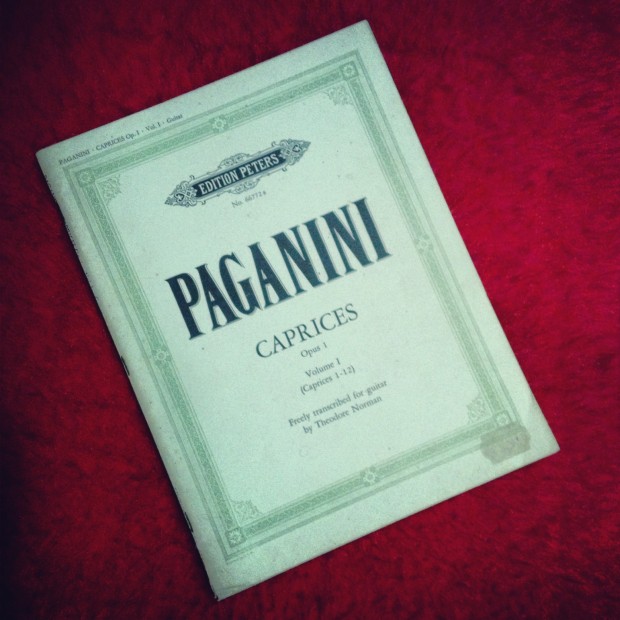Guitar Practice
Every year, I like to take a few weeks off over the summer, to clear my mind, cleanse my body and soul and reconnect with family. After that, I spend a few, equally important weeks, in the woodshed, reconnecting with my guitars and my musical history. It’s a pattern I’ve come to cherish. And, since […]

Every year, I like to take a few weeks off over the summer, to clear my mind, cleanse my body and soul and reconnect with family. After that, I spend a few, equally important weeks, in the woodshed, reconnecting with my guitars and my musical history. It’s a pattern I’ve come to cherish.
And, since I’m in the middle of a woodshed experience, doing a lot of practice and writing new material, I”ve decided to take a moment to explain the way I practice guitar these days and how that differs from the way I practiced when I was starting out.
Confessions Of A Shredder
Let’s not beat around the bush – I used to be a shredder. The kind of guitarist who spent four, six and often eight hours a day banging out scales and arpeggios as fast as I could. I literally used to end practice sessions by noting down metronome speeds and calculating my notes-per-second for each exercise. I had logs full of that stuff.
Needless to say, I don’t practice that way anymore.
Setting Musical Goals
Being self-taught I didn’t know any better. I developed my own approach; breaking music down into drills, routines and patterns. By the time I started getting lessons, at the age of 19, I already had an encyclopeadic knowledge of chords, scales, modes and arpeggios. But, to be honest, a lot of my playing sounded (and felt) robotic.
Jim Kelly was the teacher who made me realise just how pattern-bound my playing was. Guitarists are prone to letting patterns and symmetries govern their playing. But, what makes geometric sense on the fingerboard don’t always make musical sense in a song. Once I started to focus my practice and playing on musical ideas, rather than just patterns, everything changed.
The three goals at the heart of my practice today, facility, perspicacity and repository are an example of that.
Facility
I love the word facility – not in the sense of a building, but the idea of being able to do something gracefully, which comes from the Latin for easy, facilis.
Think of the way a way an Ice Skater effortlessly glides across the ice and compare that to the way most of the rest of us frantically scamper in our rental skates like some clowning bad guy in a silent film. That’s what facility and the lack of it looks like.
So, while I practice scales and arpeggios still, along with melodies and chord progressions, my goal is not speed, but facility. The musical goal is fluidity, control and expression, which requires speed, but doesn’t hold it as the ultimate goal.
Perspicacity
Once you’ve acquired a good amount of musical knowledge and theory, the real question becomes when and how to use it. So, the moment I find a musical idea, for example, a new scale, I will write a piece of music using it, or incorporate it into an arrangement.
There’s a lot of fantastic music theory books and guides to guitar playing out there. But, unless you are shrewd about using what you learn, it will be a waste of time. I still dive into music theory, but I’m always asking, how and where can I use this?
Repository
People listen to songs, not scales or musical ideas. I wish I had understood that better in my early years. These days I spend a fair bit of my practice time learning material or replaying songs I already knew, but had partly forgotten. And, of course, I do this with an eye on facility, do I have mastery of the song and perspicacity, do I understand what I’m doing and why the song works.
Also, I spend time practicing my own music. It’s kind of an odd point to make, but for a number of years, I got sucked into not really mastering my own original music, because the DAW approach allows you to “fix it in the mix.” But, I’m not keen to hit record now until I’m actually playing with some conviction. There’s not plugin that makes up for a lack of passion in a take.
Essential Tools
There’s a few practice tools I recommend. I still keep a journal, it’s good to record your goals and feelings about practice. I also record a lot of practice sessions, any DAW or recording device will do for this. I hit Amazing Slow Downer everyday to pick up on things others have played and to learn solos and chord progressions.
And, one tool I dropped years ago was the metronome. If I’m not playing along to backing tracks or recordings, I use drum loops or drum machine patterns.
I hope that helps. As always, if you have any questions, shoot me an email or leave a comment below.




